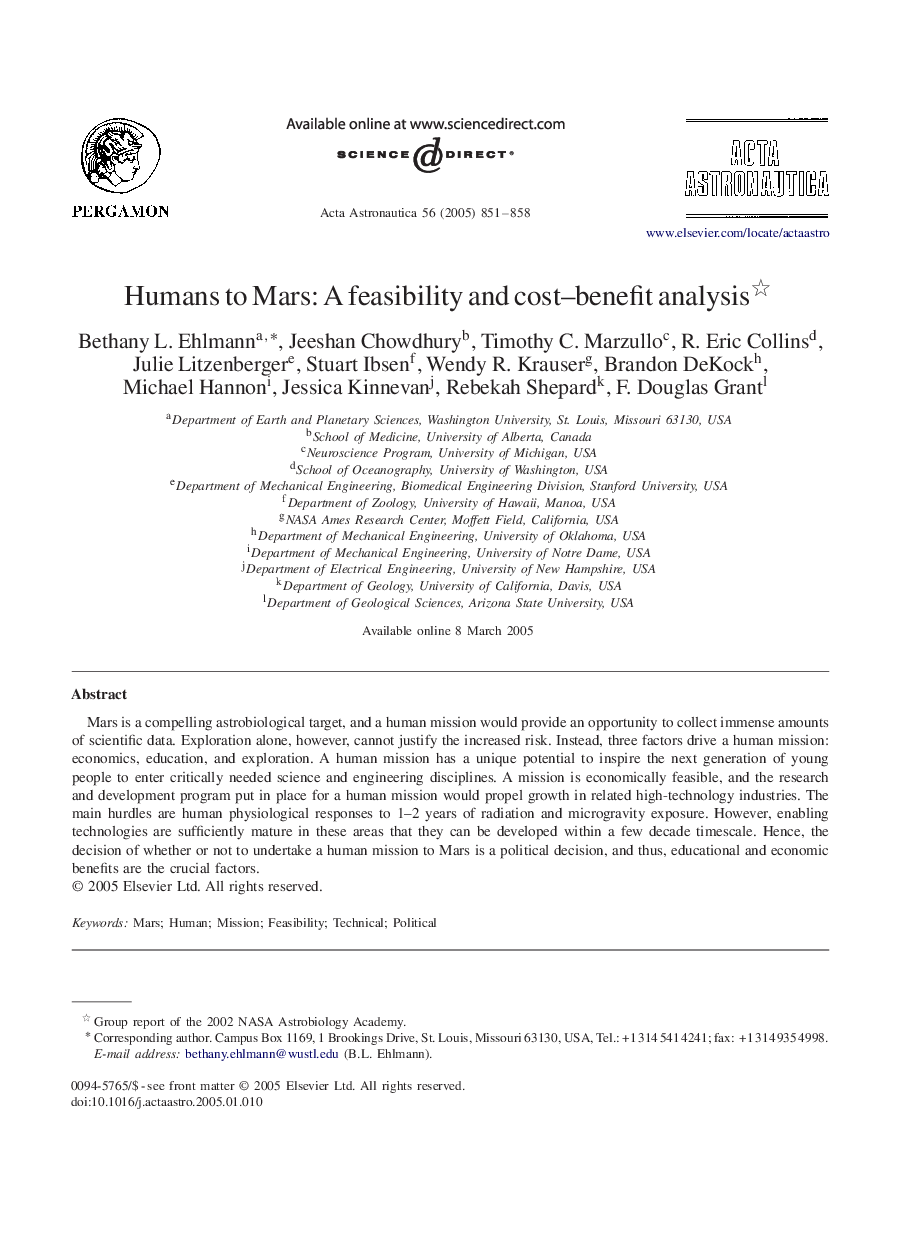| Article ID | Journal | Published Year | Pages | File Type |
|---|---|---|---|---|
| 9823187 | Acta Astronautica | 2005 | 8 Pages |
Abstract
Mars is a compelling astrobiological target, and a human mission would provide an opportunity to collect immense amounts of scientific data. Exploration alone, however, cannot justify the increased risk. Instead, three factors drive a human mission: economics, education, and exploration. A human mission has a unique potential to inspire the next generation of young people to enter critically needed science and engineering disciplines. A mission is economically feasible, and the research and development program put in place for a human mission would propel growth in related high-technology industries. The main hurdles are human physiological responses to 1-2 years of radiation and microgravity exposure. However, enabling technologies are sufficiently mature in these areas that they can be developed within a few decade timescale. Hence, the decision of whether or not to undertake a human mission to Mars is a political decision, and thus, educational and economic benefits are the crucial factors.
Related Topics
Physical Sciences and Engineering
Engineering
Aerospace Engineering
Authors
Bethany L. Ehlmann, Jeeshan Chowdhury, Timothy C. Marzullo, R. Eric Collins, Julie Litzenberger, Stuart Ibsen, Wendy R. Krauser, Brandon DeKock, Michael Hannon, Jessica Kinnevan, Rebekah Shepard, F. Douglas Grant,
